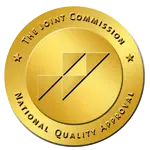Substance use disorder (SUD) is commonly comorbid with other mental health disorders. When a person has a dual diagnosis of two or more mental health disorders, their conditions are known as co-occurring disorders. One disorder that is highly comorbid with SUD is dissociative identity disorder (DID).
Dual diagnoses are common. Both conditions need to be treated simultaneously because they affect and exasperate one another. Understanding DID symptoms can help people identify the disorder in themselves and others. Getting treatment for DID and learning how to manage its symptoms can help people in recovery from SUD.
Formerly known as multiple personality disorder, DID is a rare but serious mental health disorder. It is highly comorbid with self-injury, suicide, and substance use.
Many people with DID have experienced severe childhood trauma and abuse. Childhood trauma may have included physical, emotional, or sexual abuse. Particularly, DID is more likely to develop in people who’ve experienced childhood trauma before age five.
DID can result from an inability to process these traumatic experiences. This causes the person to create alternative identities as a way to cope. The trauma prevents them from being able to develop a strong, unified sense of self that can be sustained across various states of well-being.
Four DID symptoms are:
A person with DID has multiple identities. These identities function independently of one another with distinct behaviors, memories, names, and language expressions.
DID is one of several dissociative disorders. This class of disorders may be described as the disruption of consciousness, memory, identity, or perception of the environment. Other dissociative disorders include dissociative amnesia, depersonalization/derealization, dissociative fugue, and dissociative disorder not otherwise specified.
DID is difficult to diagnose, and most people with DID do not receive the diagnosis until later in life. To diagnose DID, a mental health professional needs to review a person’s detailed psychological history. Often, people with DID are misdiagnosed with borderline personality disorder (BPD). This is because BDP can be associated with wavering self-identity and can also have dissociative symptoms. During the diagnosis process, other disorders need to be ruled out through neurological examinations.
Symptoms must include two or more distinct personalities with distinct behaviors, sense of consciousness, memory, and perception of the outside world. These symptoms must also cause a notable lack of functioning in your day-to-day life.
The goal of DID treatment is to establish safety, stability, and reduction in symptoms. During treatment for DID, a mental health professional will work with their client to remember traumatic events. They will help their client reprocess these traumas and integrate the traumatic memories across all personalities.
Typically, there are four steps for DID treatment:
Therapy techniques used for DID include trauma-focused cognitive behavioral therapy (CBT), dialectical behavior therapy (DBT), and eye movement desensitization and reprocessing (EMDR). Mental health professionals must establish a trusting relationship with their clients to effectively help them reprocess traumatic memories among multiple personalities. DID requires lifelong treatment because managing symptoms involves continued reality-based and grounding interventions
The main use of trauma-focused cognitive behavioral therapy (TF-CBT) is to reduce post-traumatic stress (PTSD) symptoms. This is useful for DID clients because the personality split is usually caused by trauma. Reprocessing that trauma is often essential for managing symptoms.
CBT is one of the most common types of therapy that involves interrogating how people’s thoughts, feelings, and actions are all connected. TF-CBT adds trauma awareness and sensitivity to this technique.
The use of DBT can help with many DID symptoms that overlap with BPD symptoms. DBT was created to treat BPD but has since been used to treat a variety of mental health disorders including DID.
Similar to CBT, DBT focuses on the relationship between thoughts, feelings, and actions. However, it also focuses on accepting your thoughts without judgment. This can help you have unconditional positive regard for yourself as you heal.
This is another treatment that focuses on healing trauma. EMDR is often used to treat people who struggle with PTSD. However, a person with DID should not receive EMDR treatment until they feel emotionally stable enough to cope with the remembering and reprocessing of their trauma.
EMDR involves following the movement of an object such as a therapist’s finger while recounting a traumatic memory to reprocess it. Usually, EMDR involves eight sessions with a trained mental health professional.
DID is highly comorbid with SUD. To manage SUD symptoms, you’ll also have to learn how to manage DID symptoms. Pathways Recovery Center has experience treating DID and offers several types of therapies that can help you manage your SUD and DID symptoms. Whether you are looking for CBT, DBT, or EMDR treatment, our mental health professionals can work with you to create a treatment plan that caters to your specific recovery needs. Pathways Recovery is here to guide you to a successful recovery. If you or someone you know is struggling with substance use, call (888) 771-0966 to learn more about how we can help you have a successful recovery by meeting you where you’re at.








